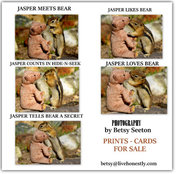"One square mile of land contains more insects than the total number of
human beings on earth! The Earth has a surface area of 196,939,900 square miles."
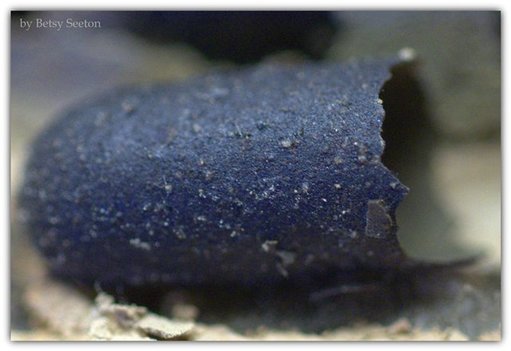 Pictured is a cocoon cracked open that was found inside one of the chambers.
Pictured is a cocoon cracked open that was found inside one of the chambers. They don't spend much time in one place. Often you'll see them flying from one point to the next quite quickly without landing long at any one location. Their on-a-mission flight pattern calls for patience while photographing them because you have to be equally focused and quick.
My advice, if you find these wasps flying around you, is to avoid waving your arms and batting at them, so you don't give them reason to defend themselves, and you'll be able to enjoy observing these beautiful creatures. The black mud daubers are a black so rich, deep and iridescent you'll often see a sheen of blue.
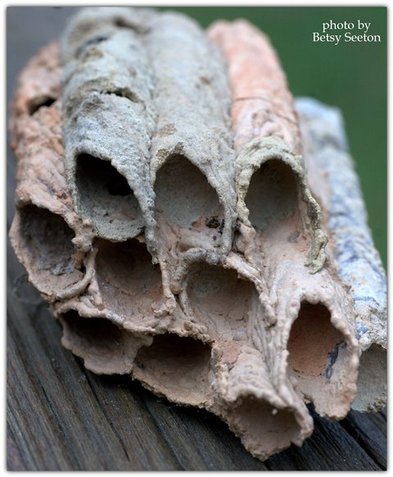
As mud dauber eggs hatch into larvae they immediately begin feeding on the stored spiders. After they've grown as much as they will at that stage, they spin a cocoon and evolve into a pupa for the winter. In springtime or summer, the pupa emerges as an adult wasp. The nest with holes through out indicate a full mud dauber life cycle.
"These marvelous wasps prefer high quality clay to build their nests and
have been known to lead people to good deposits of clay for potters."
The collage below features the results of dissecting an abandoned nest. The chambers either had dead spiders, or cocoons in various stages. Lower left photo are dead spiders. Likely, an insect intruder got into that chamber and ate the larvae and had maybe munched on some of the spiders before fleeing. On the lower right is a partially formed pupa. I broke the cocoon open to view inside. It was perfectly sealed inside the chamber.
fabric-looking material pictured below.
strength that will endure as long as life lasts.”
- Rachel Carson
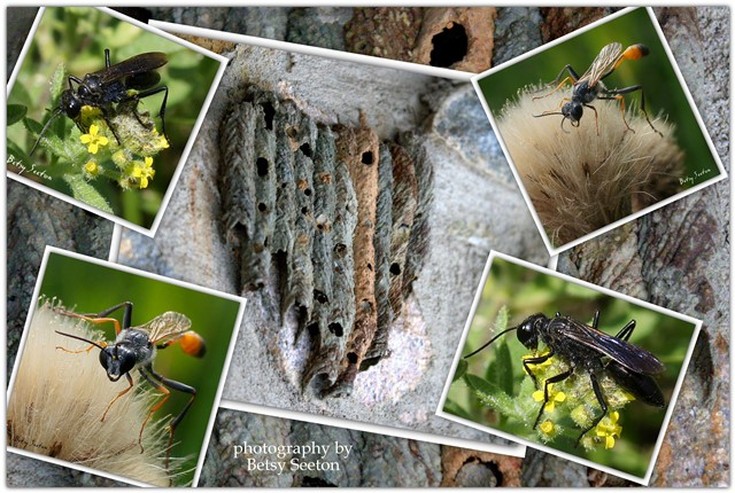
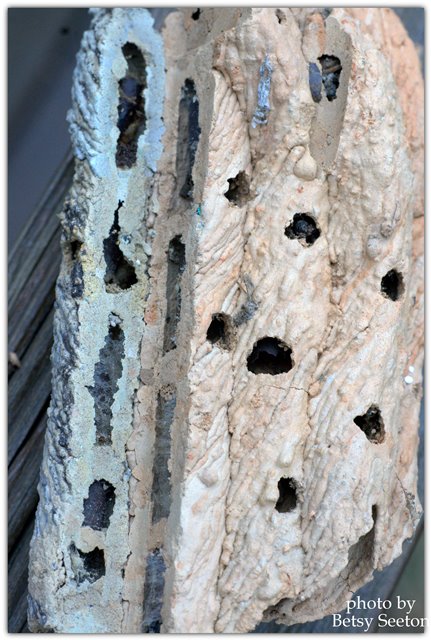
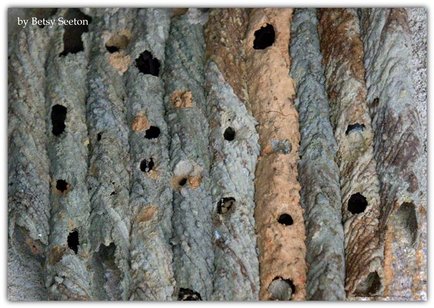
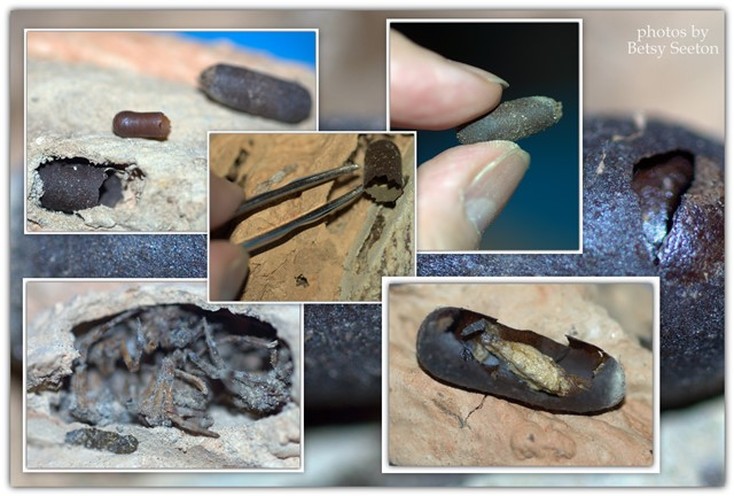
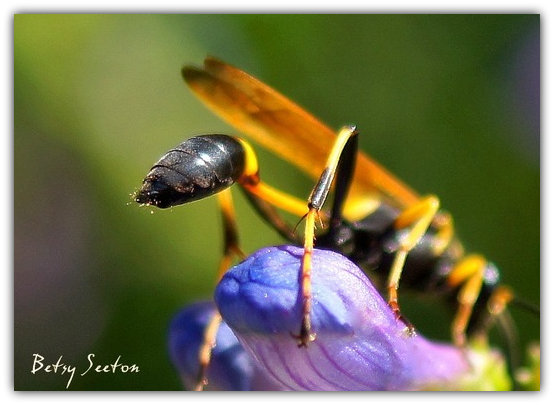
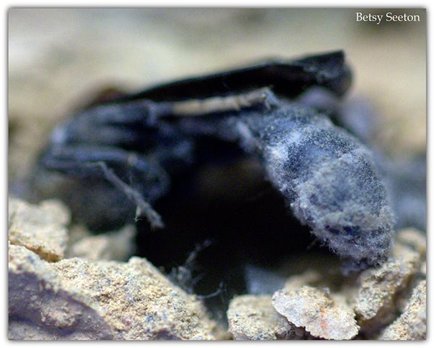
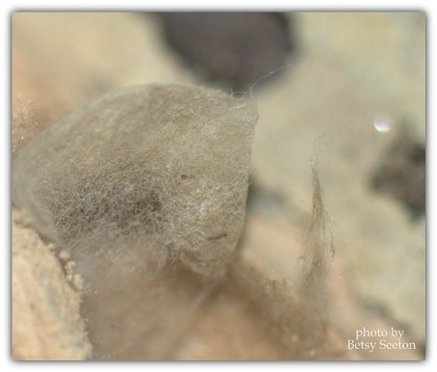
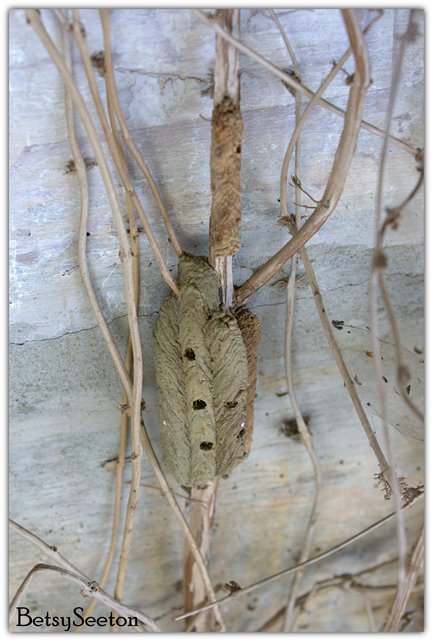
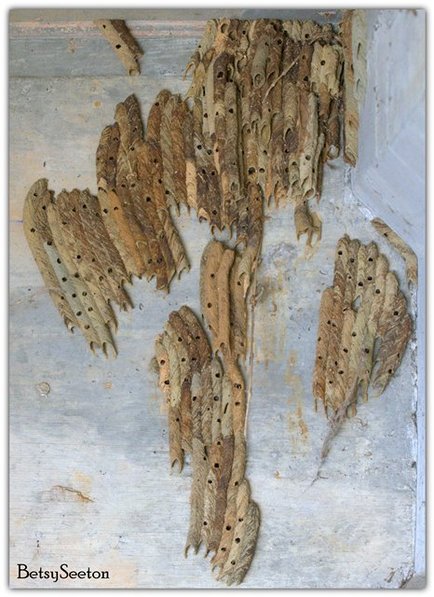
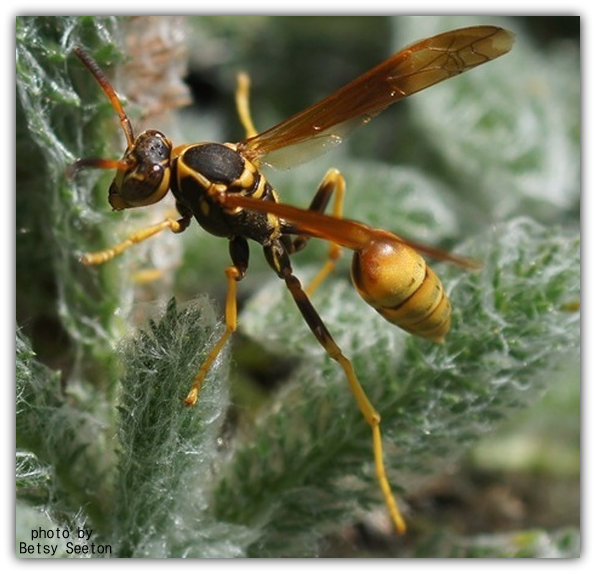
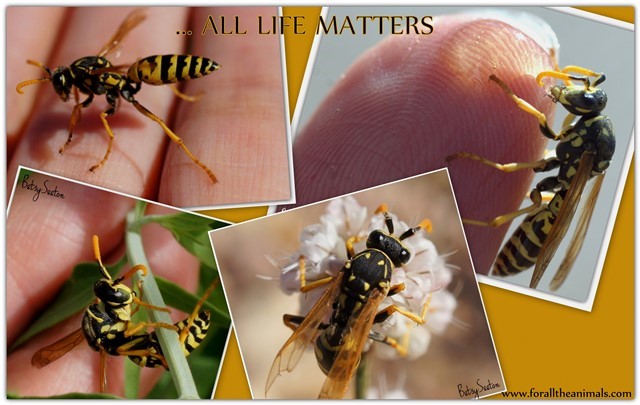

 RSS Feed
RSS Feed
